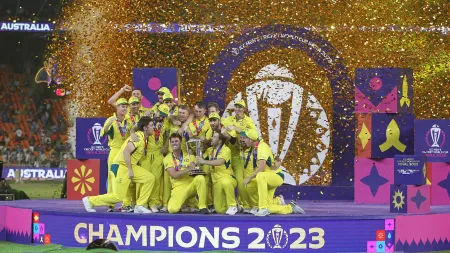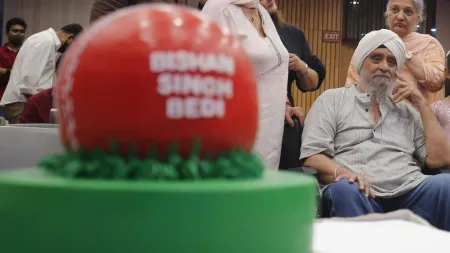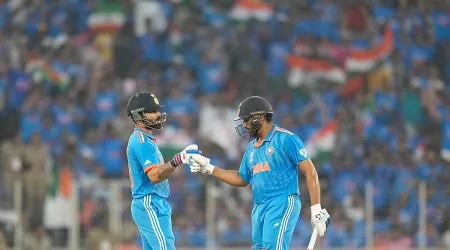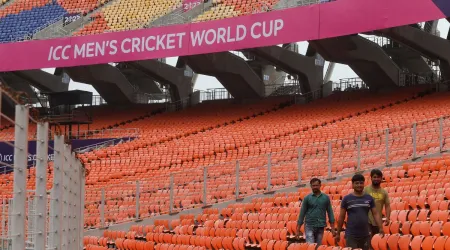- India
- International
How medals change metals: Why athletes are retested for doping
Amid reports of Yogeshwar Dutt’s 4-year-old London Olympics bronze being upgraded to silver because the original medallist has failed a dope test, Indian Express explains how and why samples are retested.
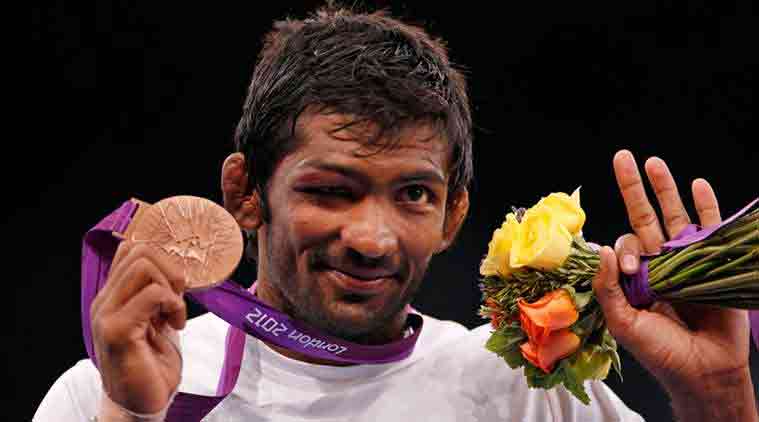 Dutt’s samples were likely tested in London, where he won bronze. A retest is likely before an upgradation is announced. (File Photo)
Dutt’s samples were likely tested in London, where he won bronze. A retest is likely before an upgradation is announced. (File Photo)
Four years after he won a bronze medal at the 2012 London Olympics, wrestler Yogeshwar Dutt looks set to get an upgrade. Dutt is likely to benefit following reports that samples collected from Besik Kudukhov, who won silver, returned positive for banned substances, following retests done this year. Retrospective testing isn’t new, although Dutt might be the highest profile Indian beneficiary of it yet — even though the wrestler himself tweeted Wednesday that he didn’t really want the silver, and valued humanism and sympathy more.
So how did Dutt’s 2012 medal suddenly change metals from bronze to silver?
Dutt originally won the 60 kg freestyle bronze. He had lost in the first round to Russia’s Besik Kudukhov. But as Kudukhov reached the final, Dutt got a chance in the repechage pool, which he won to claim a spot on the podium. But on Monday night, it emerged (reported by The Indian Express in its Tuesday edition) that Dutt was in line for a silver because samples collected from Kudukhov at London had tested positive for banned substances in retests conducted by the World Anti Doping Agency (WADA) this year. The IOC and UWW — the International Wrestling Federation — are, however, yet to confirm the findings, reveal what Kudukhov tested positive for, or award the silver to Dutt.
And why did the IOC suddenly feel compelled to test Kudukhov’s samples all over again, 4 years after London and more than two-and-a-half years after he was already dead (in a car crash in Russia in December 2013)?
The IOC’s decision to retest samples from the 2008 and 2012 Olympics must be seen in the context of the unanimous approval of Olympic Agenda 2020 — the IOC’s strategic roadmap for the future of the Olympic movement — by an IOC session in December 2014. On the anniversary of that session, IOC president Thomas Bach had said everything possible must be done “to protect the millions of clean athletes around the world”.

In March 2016, the IOC announced a re-analysis of hundreds of samples from Beijing and London. Retests were carried out in 4 waves — the first couple of waves targeting athletes who were likely to compete in Rio. “The aim… is to prevent athletes who cheated in London or Beijing, and got away with it because we didn’t have as advanced methods of analysis as we do now, from competing in Rio de Janeiro,” IOC Medical and Scientific Director Richard Budgett said. A total 1,243 samples from Beijing and London were chosen to be reanalysed in the first two waves. The second and subsequent waves of retesting have focused on medallists, as will subsequent testing. Of the 30 PAAFs (provisional adverse analytical findings) from Beijing, 23 were medallists. As a medal winner, Kudukhov’s sample was likely targeted for retesting, even though the athlete himself was no longer alive.
But hadn’t Kudukhov already been tested during the 2012 Olympics?
Drug testing for PEDs (performance enhancing drugs) at the time of the Olympics is usually not a comprehensive affair. By the time the Games end, testers could be in possession of several thousand urine and blood samples. Initial tests take place in the WADA accredited laboratory in the Olympic city. Considering the large number of samples and the short duration of the Games, not all samples will be tested for every possible drug. Experts take educated guesses on which sets of athletes are more likely to use certain drugs, and run tests accordingly. For example, tests to detect erythropoietin (EPO) will be run on endurance runners, while tests for anabolic steroids will be run on strength athletes. While Kudukhov may have been tested during the London Olympics, it is possible that he was not tested comprehensively for the full range of possible performance enhancing drugs — or that he was using a drug for which a test did not exist then.
Okay, and how long are samples preserved, and up to when after the event can they be tested?
Because time constraints make it impossible to comprehensively test samples at the Olympics, leftover urine and blood is refrigerated and taken to the Swiss Laboratory for Doping Analyses (LAD) in Lausanne, Switzerland, where they are stored in a locked freezer. Under the new WADA code that came into effect in January last year, the IOC can hold the bottles for up to 10 years — up from the 8 years until then — and can thaw the urine for a retest any time during that window. This gives scientists a chance to identify more drugs and develop new tests to identify them; they can also develop more sensitive tests for residue — or metabolites — of drugs that are found in urine.
Can all Olympians expect to have to mandatorily undergo the retest? Was Yogeshwar Dutt tested the first time?
Not all Olympians will have to worry about their urine samples being tested 10 years after they competed. Several thousand samples are taken, and maintaining such a massive collection is a logistical nightmare. Storage requires extensive climate-controlled facilities, and the inevitable contamination that will take place during the collection process and transport might invalidate a positive test. “WADA will not store the sample of an athlete like Renjith Maheshwary (who ranked 30th in the men’s triple jump) from Rio, but they will likely keep the sample of P V Sindhu (who won silver in the women’s badminton singles) for 10 years,” said PSM Chandran, a former Director of Sports Medicine, Sports Authority of India.
As a bronze medallist, Dutt’s samples were likely tested in London. They would also have been kept secure in the LAD vault. Indeed, before the IOC confirms that he will receive the silver medal, Dutt’s own sample will have to be retested to make sure it is clean.
And how common is the upgrading of medals following a failed dope test?
A number of athletes have been stripped of Olympic medals due to doping offences. As such, an equal number have been benefitted. 19 athletes have been promoted to the gold medal, 33 to silver and 43 to bronze following incidents when the original winner lost their medal after testing positive for PEDs. Yogeshwar Dutt isn’t the first Indian to benefit — long jumper Anju Bobby George became the first Indian track and field athlete to win a gold in a major world event after international governing body IAAF upgraded her second place finish at the 2005 Monaco World Athletics Final to the top spot following a dope violation by Russian Tatyana Kotova who originally won gold. The IAAF had reanalysed samples of the 2005 World Athletics Championships apparently in line with IOC’s decision to retest 8-year-old samples, going back to the 2004 Athens Olympics, in order to deter dope cheats. George has also been pressing for a reallocation of medals in Athens — she originally finished sixth, but was upgraded to fifth after Marion Jones’s suspension for drug use; however, the two Russian athletes who won silver and bronze too were subsequently banned for drug use.


















